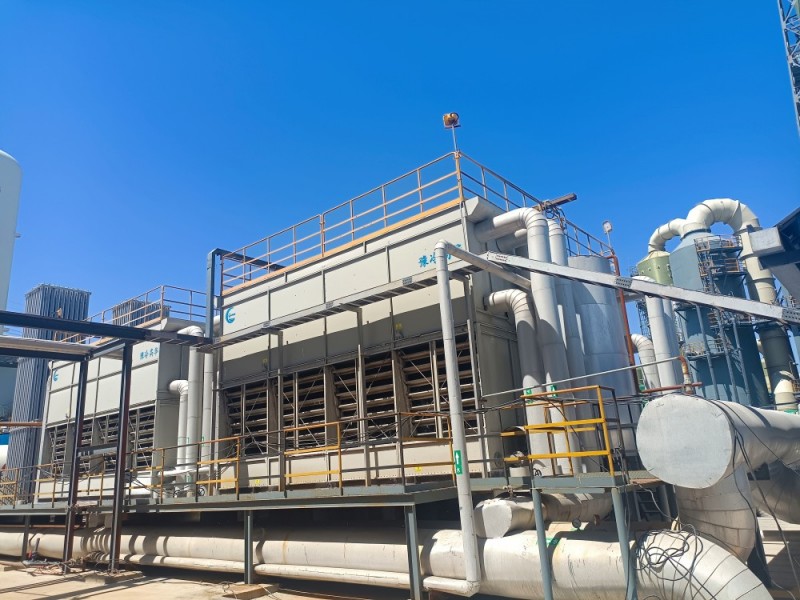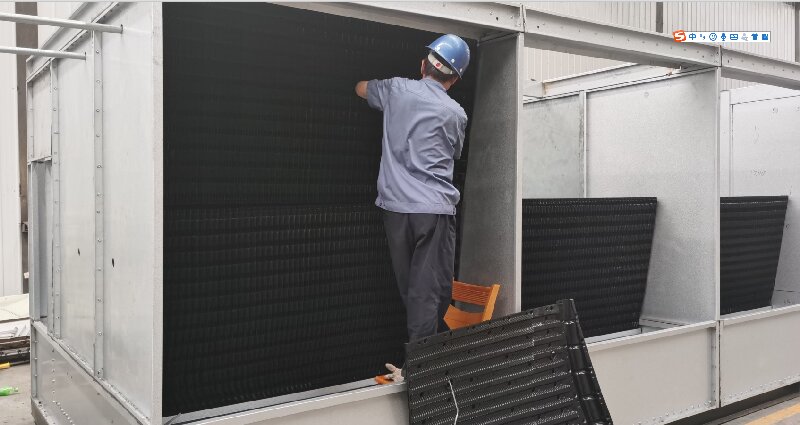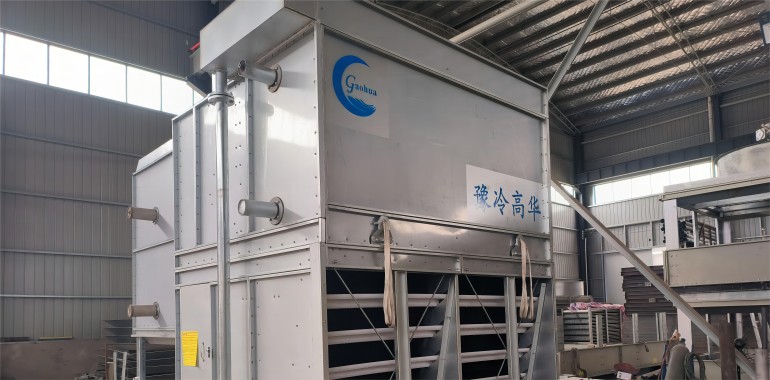Ammonia evaporative condenser is a common refrigeration technology It utilizes the physical properties of ammonia and plays an important role in the refrigeration process. In this refrigeration technology, ammonia is used as a refrigerant to absorb and release heat through the process of evaporation and condensation, thereby achieving the purpose of refrigeration.
The overheated and high-pressure refrigerant gas discharged by the compressor in the refrigeration system passes through the condenser discharge pipe in the evaporative condenser, allowing the high-temperature gaseous refrigerant to exchange heat with the spray water and air outside the discharge pipe. The gaseous refrigerant gradually condenses into liquid refrigerant from top to bottom after entering the exhaust pipe from the upper port. The super strong wind force of the supporting induced draft fan ensures that the spray water evenly covers the surface of the coil, and the water greatly improves the heat exchange effect by taking advantage of the wind force. The spray water that rises in temperature changes from a partial state to a gaseous state, utilizing the latent heat of water vaporization to carry away a large amount of heat from the wind. The water droplets in the hot air are intercepted by the high-efficiency dehydrator, and together with the other water that absorbs heat, they scatter into the PVC spray water plate heat exchange layer. The air that flows through them cools, lowers the temperature, enters the water tank, and then continues to circulate through the circulating water pump. The water evaporated into the air is automatically replenished by the water level regulator.
The heat transfer of an evaporative condenser mainly relies on the evaporation of water to carry away the condensation heat. If the amount of water sprayed is too much, it will increase the thickness of the water film outside the pipe and the air flow resistance, resulting in a decrease in air volume and deterioration of heat transfer; If the amount of water sprayed is too small, some of the pipe walls will produce "dry spots", causing the formation of scale on the pipe walls. Therefore, choosing an appropriate water spraying density is not only beneficial for heat transfer, but also can effectively reduce the energy consumption of the entire system. In addition to selecting an appropriate water spraying density, coating the outer surface of the pipe with hydrophilic materials and reducing wall roughness are also effective measures for heat transfer and energy consumption reduction.
When the lowest two rows of serpentine coils in the evaporative condenser structure are connected to the outlet manifold, it is advisable to connect from above the center of the manifold to effectively prevent liquid accumulation in the bottom coils.


